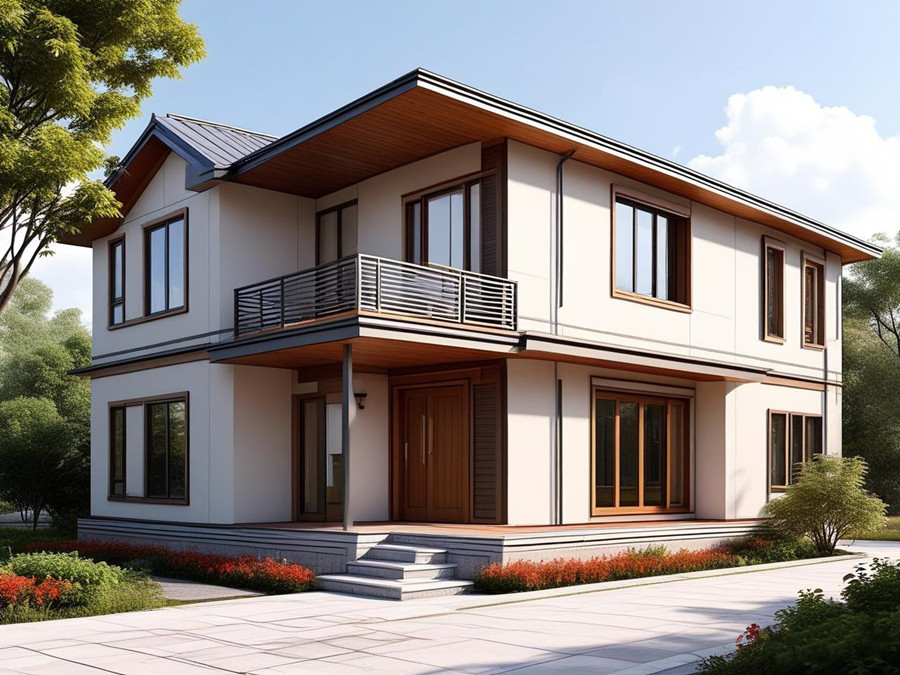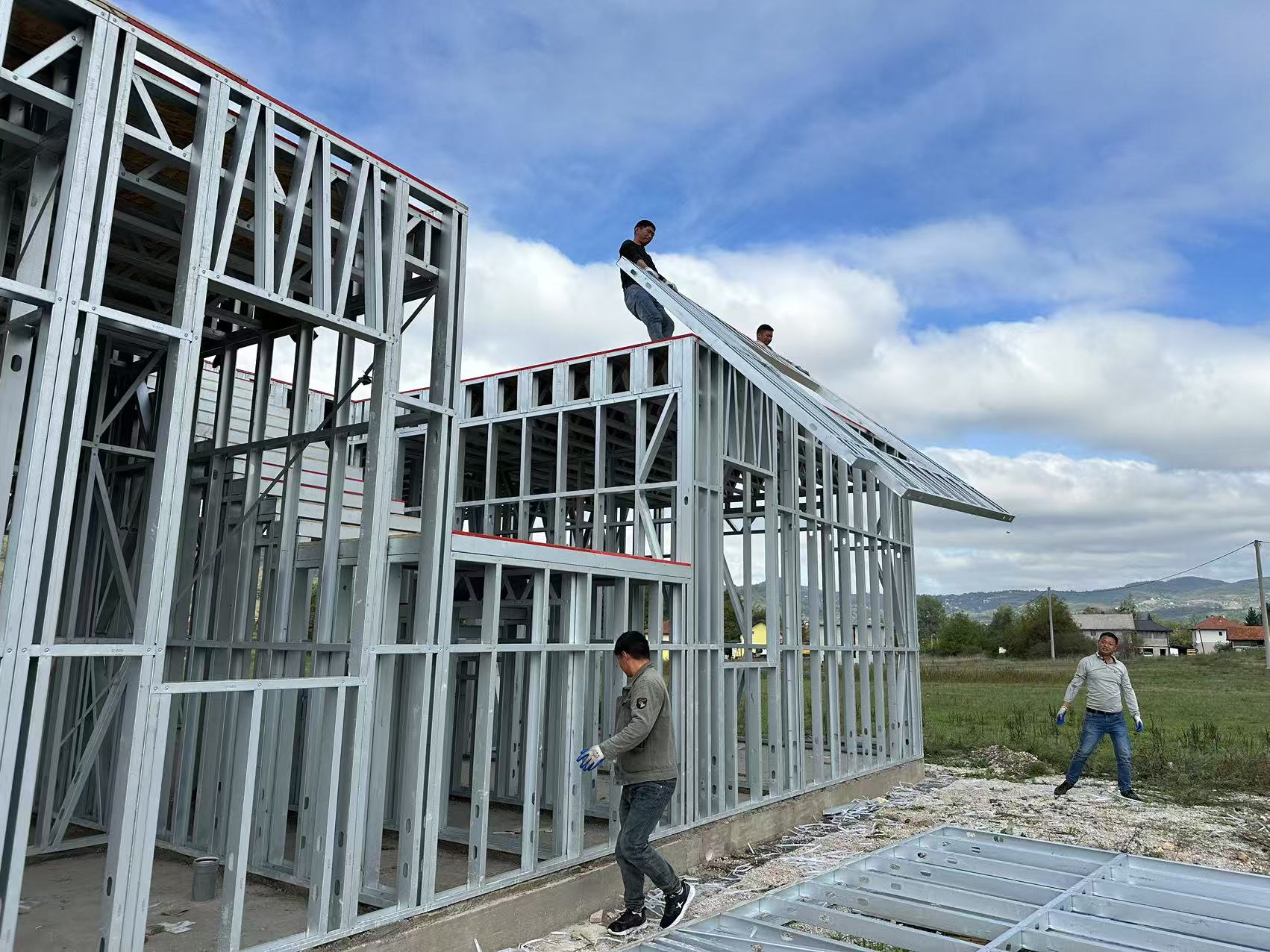Choosing between a steel structure villa and a timber frame villa is a decision that hinges on various factors, including cost, aesthetics, environmental impact, durability, and construction flexibility. Both options have their unique advantages and disadvantages, and the "better" choice ultimately depends on the specific needs, preferences, and constraints of the homeowner. This article provides a comprehensive comparison of steel structure villas and timber frame villas to help you make an informed decision.

wooden villa
1. Material Characteristics and Performance
Steel Structure Villas
•Strength and Durability: Steel is renowned for its exceptional strength-to-weight ratio. It can withstand extreme weather conditions, including high winds, earthquakes, and heavy snow loads.
•Fire Resistance: Steel has a high melting point and does not burn, making it inherently fire-resistant.
•Corrosion Concerns: While steel is durable, it can rust over time if not properly treated or coated. Regular maintenance is required to protect against corrosion.
•Recyclability: Steel is fully recyclable, making it an environmentally friendly choice in the long term.
Timber Frame Villas
•Natural Beauty: Wood offers a warm, organic aesthetic that many homeowners find appealing. It is also lighter in weight compared to steel, making it easier to handle during construction.
•Insulation: Timber naturally provides excellent thermal insulation, contributing to energy efficiency in colder climates.
•Fire Risk: Wood is flammable, so additional fire-retardant treatments are often required to meet safety standards.
•Susceptibility to Environmental Damage: Timber is vulnerable to rot, insect damage, and moisture issues, especially in humid or damp environments.

Steel structure villa
2. Construction Time and Complexity
Steel Structure Villas
•Faster Construction: Steel components are often prefabricated in a factory, reducing onsite construction time. Modular designs allow for quick assembly, making steel structure villas faster to build than traditional brick-and-mortar homes.
•Less Labor-Intensive: Prefabrication reduces the need for extensive onsite labor, streamlining the construction process.
Timber Frame Villas
•Customization Potential: Timber frames are highly customizable, allowing for intricate designs and unique architectural details. However, this customization often comes at the cost of time, as precise craftsmanship is required.
•Longer Construction Time: While timber frame construction can still be relatively fast, it may require more time for detailing, especially if the design is complex or incorporates traditional joinery techniques.
3. Cost Considerations
Steel Structure Villas
•Initial Cost: Steel can be more expensive than wood, especially when considering high-grade steel alloys or custom designs.
•Long-Term Savings: Steel structures are low-maintenance and have a longer lifespan compared to wood, leading to lower repair and replacement costs over time.
Timber Frame Villas
•Affordability: Timber is generally more affordable than steel, especially for smaller projects or homes in regions where wood is readily available.
•Higher Maintenance Costs: While the initial cost may be lower, timber requires regular maintenance to prevent rot, insect damage, and moisture issues, which can add to long-term expenses.

4. Energy Efficiency and Sustainability
Steel Structure Villas
•Energy Efficiency: Modern steel structure villas often incorporate energy-efficient features such as insulated panels and advanced framing techniques.
•Environmental Impact: Steel production is energy-intensive and contributes to carbon emissions. However, steel is fully recyclable, and using recycled steel can significantly reduce the environmental footprint of the project.
Timber Frame Villas
•Renewable Resource: Wood is a renewable resource if sourced responsibly from sustainably managed forests.
•Carbon Sink: Trees absorb carbon dioxide during growth, making wood a carbon-neutral building material.
•Thermal Performance: Timber’s natural insulating properties contribute to lower heating and cooling costs in energy-efficient designs.
5. Aesthetic and Design Flexibility
Steel Structure Villas
•Modern Aesthetic: Steel offers a sleek, contemporary look that is ideal for modern or minimalist designs.
•Design Flexibility: Steel allows for open floor plans and large spans due to its strength, enabling creative architectural designs.
Timber Frame Villas
•Rustic Charm: Timber frames evoke a sense of warmth and tradition, making them ideal for cozy, rustic, or countryside settings.
•Customization: Timber can be easily shaped and carved to create intricate details, giving homeowners the freedom to express their personal style.
6. Maintenance and Longevity
Steel Structure Villas
•Low Maintenance: Steel requires minimal upkeep beyond periodic inspections for corrosion or damage.
•Long Lifespan: When properly maintained, steel structures can last for decades without significant degradation.
Timber Frame Villas
•Higher Maintenance Needs: Timber requires regular painting, sealing, or treatment to protect against environmental damage.
•Shorter Lifespan Without Proper Care: While well-maintained timber frames can last for generations, neglect can lead to premature deterioration.
7. Adaptability and Future-proofing
Steel Structure Villas
•Adaptability: Steel structures can be easily modified or expanded in the future, making them a good choice for long-term flexibility.
•Resilience to Climate Change: Steel’s durability makes it a resilient choice for regions prone to extreme weather events or natural disasters.
Timber Frame Villas
•Climate-Specific Performance: Timber performs best in dry climates and may struggle in areas with high humidity or frequent rainfall.
•Limited Adaptability: Modifying or expanding a timber frame villa can be more challenging due to the material’s inherent limitations.
8. Conclusion: Which Is Better?
Both steel structure villas and timber frame villas have their strengths and weaknesses, and the "better" option depends on your priorities:
•Choose Steel if: You prioritize strength, durability, low maintenance, and a modern aesthetic. Steel is also a good choice if you live in an area prone to extreme weather conditions or want a long-lasting, future-proof home.
•Choose Timber if: You value natural beauty, energy efficiency, and a connection to nature. Timber is ideal for those who prefer a cozy, rustic design and are willing to invest in regular maintenance.
Ultimately, the decision should align with your lifestyle, budget, and vision for your home. Both materials offer unique benefits, and with proper design and construction, either can result in a beautiful, functional, and sustainable living space.